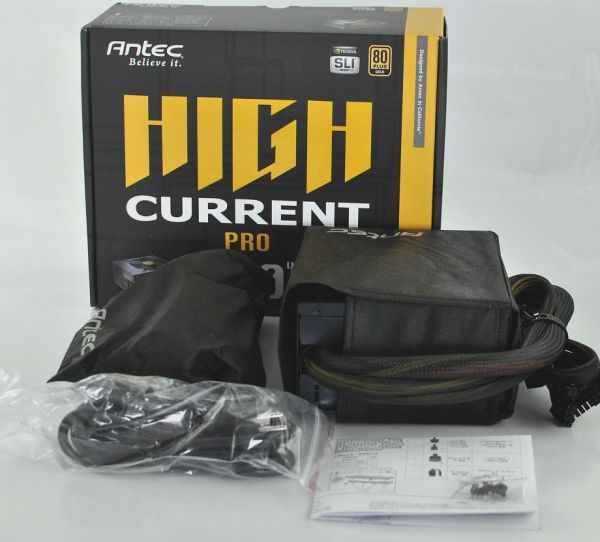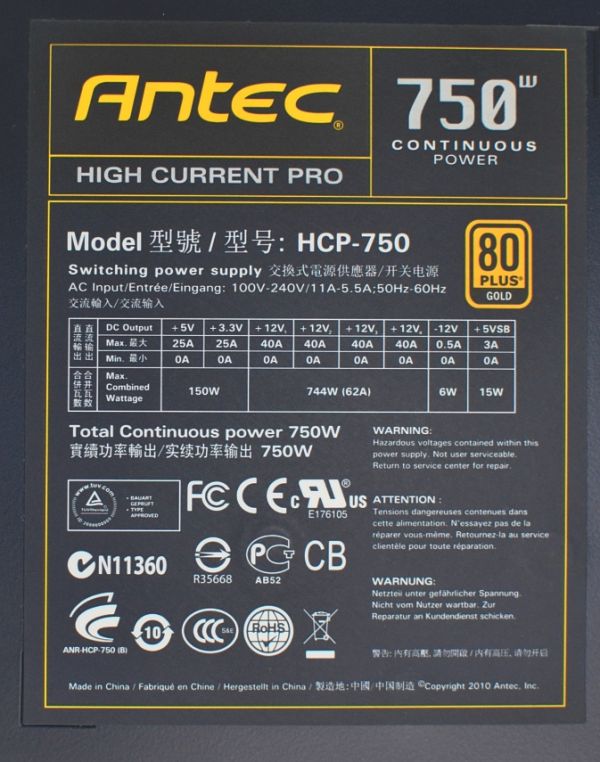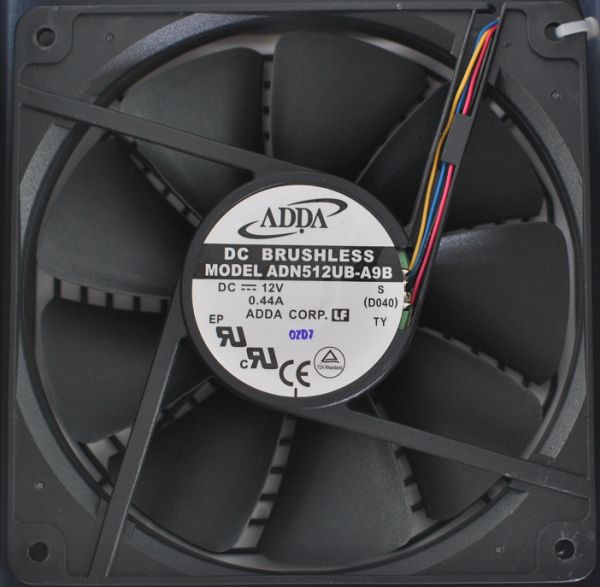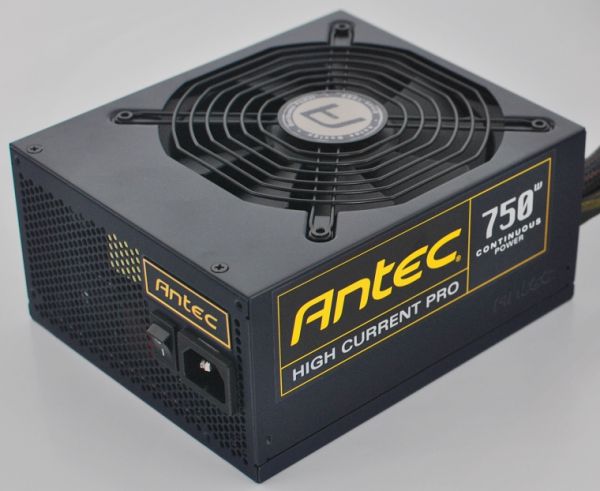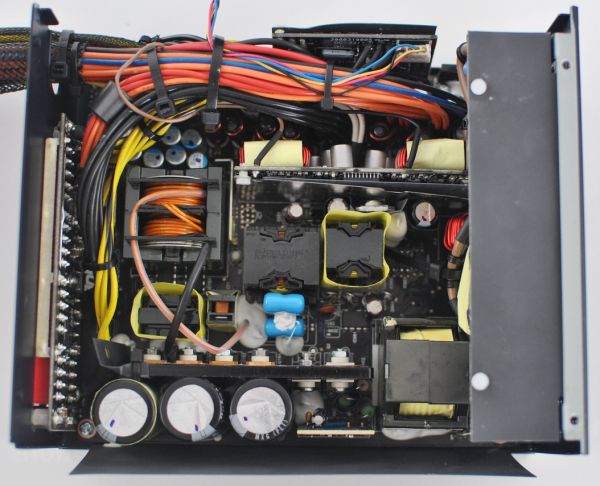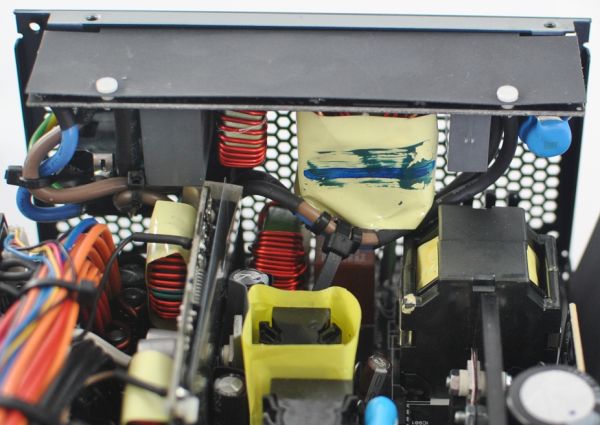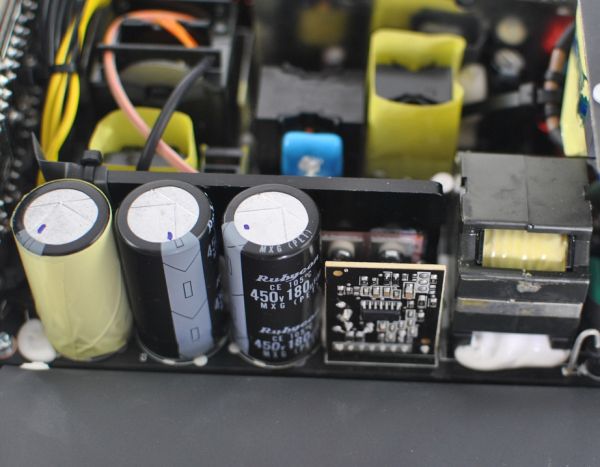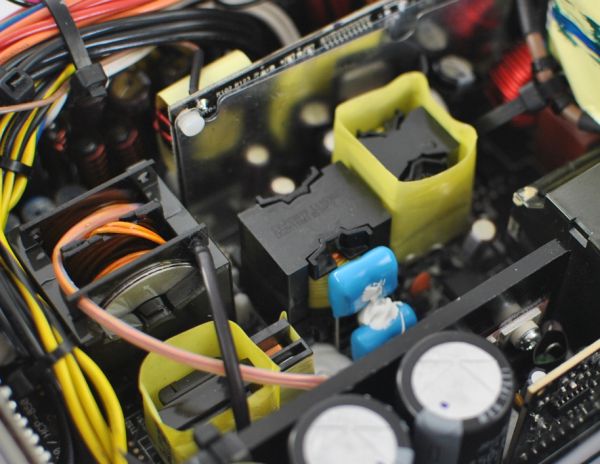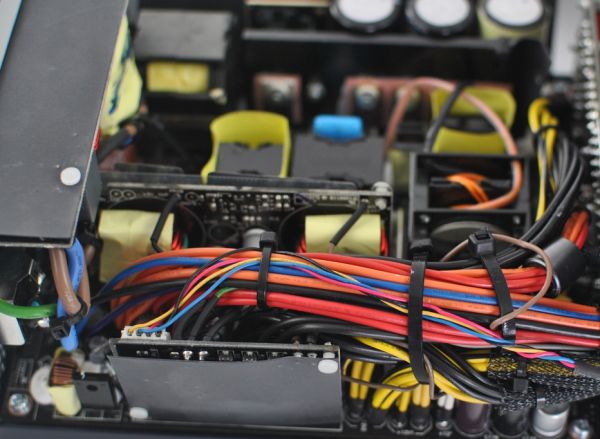
Original Link: https://www.anandtech.com/show/4975/antec-hcp-750w-80plus-gold
Antec HCP-750 80 Plus Gold
by Martin Kaffei on October 26, 2011 4:35 AM EST- Posted in
- PSUs
- Antec
- Cases/Cooling/PSUs
- 80Plus Gold
- 750W
- High Current Pro
Antec HCP-750 Overview and Specifications
Today we take a look at the Antec HCP-750. Let's start with the delivery contents. Apart from the PSU itself the package includes a power cable, four screws to mount the device in the PC case, a short user guide, and the modular connectors in a separate bag. The HCP is protected from dust and dirt by a bag during shipping. The product features include 80 Plus Gold Certification, the 16-AWG connection cables (large wire cross-section), the 135mm PWM fan, and the gilded connectors. In addition Antec ofers a 5-year warranty, which is a common feature for a product like this.
The HCP-750 has four +12V outputs, each of which can be loaded with 40A according to the manufacturer. Almost the full power is provided here because of the DC-to-DC VRM. The +5V and +3.3V combined output is 150W. +5VSB can handle 3A (or 15W), and the label shows the various safety certifications. Antec products can be bought all over the world, so there are many country-specific requirements.
Antec uses a DC fan from ADDA with the model number ADN512UB-A9B. This one is controlled via PWM, so the duty cycle will be modulated. As a Sanyo Denki employee reported at Computex 2011, PWM is much better for the fan than voltage control. However, it should be mentioned that Antec has patented the use of PWM fans in PC power supplies, which complicates their use for other manufacturers. The fan needs 0.44A from the +12V output, and the nine fan blades pictured above are pretty well made.
Appearance, Cables, and Connectors
In contrast to most other products the housing of the HCP-750 is coated in anthracite. The fan grille has a pseudo-octagon shape and the front has protruding connector sockets in red and black. The fan is noticeably smaller than the case. The ventilation holes are (as usual) honeycombed and relatively small. This is advantageous for ensuring EMI is within spec but disadvantageous for cooling. A small power switch is located directly next to the power input.
Overall, the build quality of the case is flawless. On almost all sides of the PSU Antec logos can be found. At 180mm long and considering the power rating and modular connector system, the power supply is an average size. Under the cable sleeving you can still see the yellow, orange and red wires.
| Cables and Connectors | ||
|
|
Main | 24-pin 55cm fixed |
| ATX12V/EPS12V | 4+4-pin 65cm fixed, 8-pin 65cm modular | |
| PCIe | 2x 6/8-pin (55, 70 cm) fixed, 2x 6/8-pin (55, 70 cm) modular | |
| Peripheral | 3x SATA (55, 70, 85 cm), 3x SATA (55, 70, 85 cm), 3x SATA (55, 70, 85 cm) all modular | |
| 3x HDD (55, 70, 85 cm), 3x HDD, 1x FDD (55, 70, 85, 100 cm) all modular | ||
With four 6/8-pin PCIe connectors the power supply is relatively well equipped. Despite the somewhat more generous cable cross-section it would have been better to split the PCIe connectors onto four separate cables, though that can also create more cable clutter within a case if you need to use all the cables.
The 24-pin, the 4+4-pin 12V AUX, and two of the PCIe connectors are permanently installed at the power supply. This is quite understandable, since this power supply will typically be used with powerful graphics cards. The HCP-750 has six Molex connectors, which should be sufficient for the vast majority of builds. The fact that Antec offers two 8-pin connectors for server motherboards is another great idea. A fixed FDD connector is included in the configuration as well, which will still be useful for some builds.
Internal Design and Components
The manufacturer for the HCP-750 is Delta Electronics, just like the HCP-1200, but there are clear differences between the two designs. First, Antec uses a resonant converter like Enermax and Seasonic; on the input side, however, a full bridge circuit is used. Furthermore, the model has two major PCBs, where the smaller board is only used for portions of the EMI filtering. Another significant change is that the power supply is cooled vertically by a large fan. It is striking that no rectifiers are installed in the secondary side—at least no THT components and heatsinks. You'll get the detailed description when we take a look on the secondary circuit in a moment. Where needed, a protective foil against short circuits is used. The output wires are grouped together with serveral cable ties.
Behind the AC input are a total of eight Y-capacitors from China, two common mode chokes, two X-capacitors, a linear choke, a MOV, a thermistor, and a relay. Thus the HCP is well equipped in order to suppress interference from the power grid. Both the phase and the neutral conductor have a large wire cross-section. From this point of view it is noticeable that there is not too much space for ventilation. The small additional PCB on top is the reason for this limitation, but the air is pushed down anyway and flows primarily along the board to the outside. Even though some of the upper ventilation holes are blocked, cooling shouldn't be a problem.
The two rectifier bridges with a common heatsink can rectify an alternating current with an RMS value of 25A—at least with the specified ambient temperature and a corresponding size of the heatsink as in the data sheet. In the power factor preregulator we can find three Rubycon capacitors (MXG, 22mm diameter), two Infineon MOSFETs with a low turn-on resistance, and a PFC choke with its own plastic case The FAN6982-IC regulates the current and is designed for continuous current mode (CCM).
The full bridge circuit consists of two half-bridges (two transistors each), which switch alternately. As usual for this variant, the two half-bridges work with the same duty cycle and are phase-shifted. In this case the phase is not the phase conductor, but the phase angle. Thus there is a phase modulation with two time-shifted oscillations through both half-bridges. Especially for a high power output this circuit topology is ideal.
On the output side the full oscillation is rectified, without the need for using a buffer (chokes). Since the resonant circuit makes zero-voltage switching possible, the switching losses are low and the switching frequency can be increased dramatically compared to hard switching topologies.
The four-quadrant operation is crucial for the transformer size, in which not only the first quadrant can be used, but also all negative values (or positive and negative in Q2 and Q4). This is why the transformer and the remaining passive components in this type of converter can be significantly smaller.
Nobody should be concerned by the small main transformer. Here we have a true 750W power supply, and the design principle of this converter is suitable for 1 KW and more. Important for this design is the separate resonant circuit, so no parasitic effects are used to allow ZVS. This could, for example, be the capacitances between two conductors, transformer windings, or between the gate and bulk terminal of the MOSFETs, plus the natural magnetic fields of all conductors and leakage inductivity.
Output side, the two buck converters for +5V and +3.3V are on an additional board. All direct currents run through a circuit made up of rod core inductors and Japanese capacitors. The PCB on the bottom of the 4-pin fan is connected and controlled by the duty cycle. All +12V outputs are protected by OCP, and the cables are fitted with heat-shrink tubing. On the far left we see a small linear regulator for -12V. The MOSFETs for +12V rectification can be found on the back of the main PCB. They are connected via a thermal pad to the housing and can be run almost uncooled at the specified performance. The losses in the semiconductors should be very low.
Voltage Regulation
| +3.3V Regulation/Ripple and Noise | |
| Load | Voltage |
| 5% | +1.70% (15 mV) |
| 10% | +1.58% (15 mV) |
| 20% | +1.39% (14 mV) |
| 50% | -0.61% (10 mV) |
| 80% | -1.61% (13 mV) |
| 100% | -2.06% (16 mV) |
| 110% | -2.30% (15 mV) |
| Crossload +12V max. | -0.18% |
| Crossload +3.3V/+5V max. | -2.72% |
| +5V Regulation/Ripple and Noise | |
| Load | Voltage |
| 5% | +2.00% (22 mV) |
| 10% | +2.00% (23 mV) |
| 20% | +1.80% (22 mV) |
| 50% | +0.00% (10 mV) |
| 80% | -0.80% (12 mV) |
| 100% | -1.10% (14 mV) |
| 110% | -1.20% (13 mV) |
| Crossload +12V max. | +0.86% |
| Crossload +3.3V/+5V max. | -2.96% |
| +12V Regulation (Worst Rail)/Ripple and Noise (Worst Rail) | |
| Load | Voltage |
| 5% | +1.28% (9 mV) |
| 10% | +1.24% (8 mV) |
| 20% | +1.16% (7 mV) |
| 50% | +0.42% (35 mV) |
| 80% | -0.42% (30 mV) |
| 100% | -0.45% (28 mV) |
| 110% | -0.51% (27 mV) |
| Crossload +12V max. | -0.67% |
| Crossload +3.3V/+5V max. | +0.63% |
Noise Levels
| Sound Pressure Level (Ambient: 16dBA. 1m distance) | |
| Load | dB(A) |
| 5% | 18 |
| 10% | 18 |
| 20% | 18 |
| 50% | 20 |
| 80% | 23 |
| 100% | 27 |
| 110% | 31 |
Efficiency and PFC
| 115VAC. 60Hz | ||
| Load | Efficiency | PFC |
| 5% | 69.95% | 0.842 |
| 10% | 79.10% | 0.911 |
| 20% | 87.08% | 0.986 |
| 50% | 90.78% | 0.989 |
| 80% | 89.36% | 0.991 |
| 100% | 87.99% | 0.993 |
| 110% | 87.23% | 0.992 |
| 230VAC. 50Hz | ||
| Load | Efficiency | PFC |
| 5% | 76.42% | 0.810 |
| 10% | 80.36% | 0.840 |
| 20% | 87.52% | 0.970 |
| 50% | 90.87% | 0.982 |
| 80% | 90.04% | 0.985 |
| 100% | 89.80% | 0.988 |
| 110% | 88.17% | 0.990 |
As you can see we have two new tests. 5% is exactly half of the load we use at 10%, and it shows how the PSU performs below the 80 Plus loads (20% and more). In addition you can find crossload tests in the charts above.
Crossload tests are static loads where we try to put the PSU under stress with high current on 3.3V/5V and low current on 12V, or high current on 12V and low current on 3.3V/5V. Since most PSUs have a common forward converter the PWM-IC can only regulate one voltage while the other ones are coupled to the same control loop via resistors. (Usually +3.3V has its own mag amp or shunt regulator; -12V uses a transistor.) This is the reason why 12V is often too high when 5V is loaded with a low current and too low when 5V is loaded with a high current. An example: the control circuit has no reason to raise 5V with 1A load while 12V is at 20A load. 12V is very low now, e.g. 11.40V, but since these voltages have the same regulation, 12V won't be raised since 5V is the reference value.
At 5-20% load the fan is no quieter than the one from the HCP-1200, which was already silent and close to our measurement limit. Therefore the fan rotates somewhat slower at high load. In addition, there is no background noise, which is something we see in the air channels of an 80mm design. The bad thing is we always hear the ball bearing of the ADDA fan; Sanyo Denki would be a better choice here. At its peak nearly 91% efficiency can be achieved. The power factor is a maximum of 0.990. Ripple and noise is very low during all loads. It might look unusual that ripple and noise are higher at low load, but this is a typical result for the CM6901X IC and the resonant circuit. Overall the performance is great.
Conclusion
The Antec HCP-750 is an efficient power supply with generally average equipment . The ripple and noise voltage is low at all loads and performance is great. The total noise of the fan is also satisfying. Where things aren't so great is in the packaging extras. The current market price is influenced by what others traders are charging for similar product, and not surprisingly the cost is going to be quite a bit higher than lesser power supplies.
Compared to the HCP-1200, Delta Eletronics has changed to zero voltage switching (ZVS) by using a separate resonant circuit. However, the phase-shifted full bridge converter is still a part of the topology. This is one of the best circuit designs for a high output power. Antec shows in an impressive way how strongly the components can be miniaturized with higher switching frequencies and four-quadrant operation. This also affects the heatsinks; since the switching losses are reduced to a minimum, other components do not warm up as much. The result is that the HCP-750 has low operating temperatures and a moderately controlled PWM fan. The high-quality capacitors and EMI filtering are well developed, which should also be mentioned. However, Delta continues to use Chinese components in places such as the Y capacitors. The component mix of a large manufacturer is sometimes disadvantageous, which is why Japanese capacitors often perform better.
As shown in our performance section, the HCP-750 reaches nearly 91% efficiency at 230V and 115V input voltages. Especially at low load the efficiency is noteworthy, because 80 Plus Gold requires good values only at 20%, 50%, and 100% loads. The +12V output is well regulated during overload and crossload. The other output voltages are close to the optimal values as well. Fan noise is slightly lower than the results we saw with the HCP-1200, but the difference is not much and the extra 450W of output on the big brother needs to be taken into consideration. While the noise levels may be similar, it's also important to consider the type of noise a PSU generates. There are differences in how a 135mm fan sounds and how an 80mm fan sounds, with the larger fans generally being preferred. Still, for a high-end PSU Antec should use Sanyo Denki fans, since the ADDA model makes some bearing noise. Overall, though, the acoustic noise is not bad for a 750W power supply.
With nine SATA, one FDD, and six Molex connectors, the 750W model is fairly well equipped. It might be better to have the PCIe connectors distributed to multiple cables, at the cost of cable clutter, but the wire cross-section helps make up for this. The 24-pin and the 12V AUX harnesses are 55cm and 65cm long, so the power supply is suitable for most large PC cases. The cable sleeveing is relatively cheap and not opaque, which is a minor point against an otherwise high quality PSU. Another minor complaint is that, apart from the necessary items for installation and a user manual, nothing else is included in the package. The competition often offers a few extras, like some cable ties, and given the target market the lack of any extras is underwhelming.
The current price for the Antec HCP-750 is $140, down from $175 just a few weeks ago. For an 80 Plus Gold power supply with this quality, the price is quite impressive—a quick search at Newegg for instance reveals this to be one of the least expensive 700W-800W 80 Plus Gold/Platinum PSUs. There are other options worth a look of course. For example, the LEPA G-series provides similar quality, using Enermax technology based on their Modu87+ series. The FSP Aurum CM 750W is also very cheap, but it's even louder than the Antec HCP-1200—not good for a 750W PSU—plus the voltage quality is slightly worse. Other alternatives like the be quiet! E9 series and the Cougar GX 700W models are significantly more expensive, but also a little quieter under load or equipped with a well-processed case.
Overall, the Antec HCP-750 provides a good showing that's roughly in line with all the other ~750W 80 Plus Gold products. A few extras could certainly sweeten the deal, but for the price this is an excellent power supply. We can safely recommend the HCP-750 for anyone looking for a higher wattage power supply that will handle overclocking and dual-GPU configurations with aplomb. Users who are more interested in a system that should be used but not heard may find other offerings more compelling, and for those we'd suggest looking at current and upcoming Seasonic or Enermax PSUs as an alternative.

